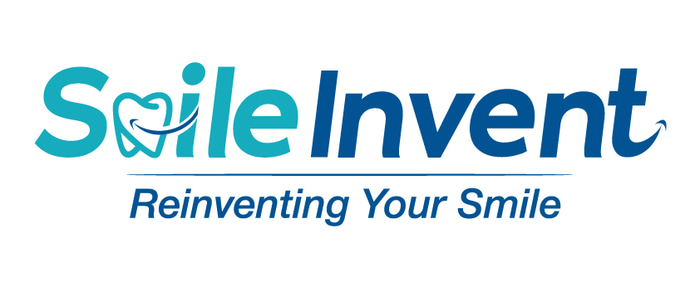Preventive Dentistry
Scaling and Polishing
Routine cleaning and polishing in dentistry, often referred to as professional dental cleaning, is a preventive procedure aimed at maintaining oral health by removing plaque, tartar, and surface stains from teeth. It is a vital part of regular dental care and contributes to healthy teeth and gums.
Steps in Routine Cleaning and Polishing:
1. Examination:
The dentist or hygienist examines the oral cavity to check for signs of gum disease, cavities, or other issues.
2. Scaling:
Manual Scaling: Using hand instruments to remove plaque and tartar.
Ultrasonic Scaling: A vibrating tool with a water spray is used to break down and wash away hardened tartar (calculus).
3. Polishing:
A rotary brush or rubber cup is used with a special polishing paste to smooth the tooth surfaces.
This step removes surface stains, leaving teeth looking shiny and clean.

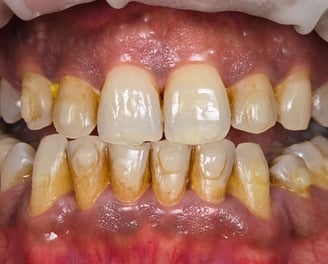
4. Flossing:
Floss is used to clean between teeth and remove debris loosened during cleaning.
5. Fluoride Treatment (Optional):
A fluoride gel or varnish may be applied to strengthen enamel and protect against cavities.
Benefits of Routine Cleaning and Polishing:
1. Prevents Gum Disease:
Removes plaque and tartar buildup that can cause gingivitis and periodontitis.
2. Improves Oral Hygiene:
Ensures areas that are difficult to clean at home are thoroughly addressed.
3. Enhances Aesthetic Appeal:
Polishing removes surface stains, giving teeth a cleaner, whiter appearance.
4. Prevents Bad Breath:
Eliminates bacteria and debris that contribute to halitosis.
5. Promotes Overall Health:
Reduces the risk of systemic conditions like heart disease and diabetes, which are linked to oral infections.
Frequency:
For most patients, routine cleaning is recommended every 6 months. Individuals with periodontal disease or certain health conditions may require cleanings more frequently, such as every 3-4 months.
At-Home Maintenance Tips:
1. Brush teeth twice daily with fluoride toothpaste.
2. Floss daily to clean between teeth.
3. Use an antibacterial mouthwash if recommended.
4. Avoid smoking and limit staining foods/drinks like coffee and wine.
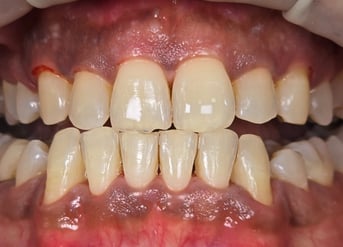

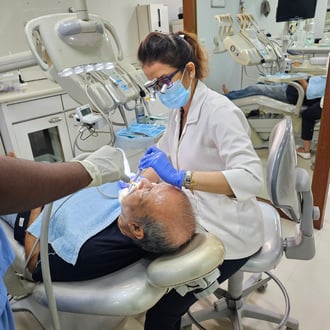

Fluoride Treatments
Fluoride treatment in dentistry is a preventive procedure designed to strengthen teeth and protect them against cavities (dental caries). Fluoride, a naturally occurring mineral, helps to remineralize tooth enamel and prevent demineralization caused by acids from bacteria and food.
Types of Fluoride Used in Dentistry:
1. Topical Fluoride:
Applied directly to the tooth surface during dental visits. Found in products like toothpaste, mouth rinses, and varnishes.
2. Systemic Fluoride:
Consumed through fluoridated water, dietary supplements, or foods. Benefits developing teeth and enamel from the inside.
How Fluoride Treatment Works:
1. Strengthens Enamel:
Rebuilds weakened tooth enamel by promoting remineralization.

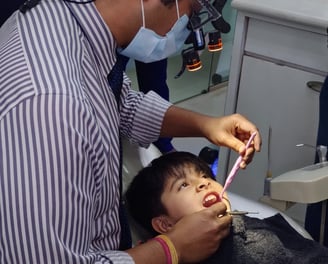
2. Prevents Decay:
Makes teeth more resistant to acid attacks from plaque and sugars.
3. Inhibits Bacteria:
Reduces the ability of oral bacteria to produce acid. Professional Fluoride Treatment Process:
1. Cleaning: Teeth are cleaned to remove plaque and tartar.
2. Application:
Varnish: A sticky fluoride gel painted onto teeth. Gel or Foam: Placed in a tray and fitted over the teeth for 1–4 minutes.
Rinse: A fluoride mouth rinse may be given.
3. Post-Treatment:
Patients are advised to avoid eating or drinking for 30 minutes to allow fluoride absorption.
Benefits of Fluoride Treatment:
1. Cavity Prevention: Reduces the risk of tooth decay, especially in children and high-risk individuals.
2. Sensitivity Relief: Alleviates sensitivity by sealing exposed dentin.
3. Strengthens Teeth: Helps both primary and permanent teeth.
4. Cost-Effective: Prevents more costly dental issues down the road.
Who Needs Fluoride Treatment?
1. Children: Developing teeth benefit greatly from fluoride.
2. Adults: Especially those with:
A history of cavities.
Gum disease (which can expose tooth roots).
Dry mouth (xerostomia) from medications or conditions.
Orthodontic appliances, crowns, or bridges.
Frequency:
Most patients benefit from fluoride treatments every 6 months during regular dental check-ups.
High-risk patients may require more frequent applications.
At-Home Fluoride Use:
1. Brush with fluoride toothpaste twice daily.
2. Use fluoride mouth rinses if recommended by your dentist.
3. Drink fluoridated water if available.


Oral Exams and Cancer Screening
Oral exams play a critical role in the early detection, prevention, and management of oral cancer and other dental issues. Here’s how they intersect with cancer in dentistry:
1. Importance of Oral Exams in Cancer Detection
Screening for Oral Cancer: Regular dental checkups include an oral cancer screening, where dentists examine the mouth, tongue, gums, throat, and surrounding tissues for abnormalities such as sores, red or white patches, or unusual lumps.
Early Diagnosis: Detecting oral cancer in its early stages significantly improves treatment outcomes and survival rates. Dentists often look for early signs like persistent ulcers or lesions.
2. Signs Dentists Look For
Visible Changes: White or red patches (leukoplakia or erythroplakia), swelling, lumps, or thickened areas in the mouth.
Pain or Difficulty: Persistent pain in the mouth, difficulty chewing, swallowing, or moving the jaw/tongue.
Unexplained Bleeding: Chronic bleeding from the mouth or gums.
Non-Healing Sores: Ulcers or wounds that don’t heal within two weeks.
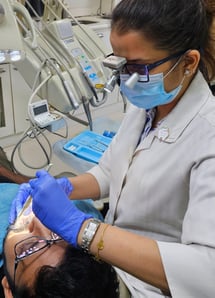

3. Risk Factors Dentists Consider
Tobacco and Alcohol Use: Both are major risk factors for oral cancers. Human Papillomavirus (HPV): Particularly HPV-16 is linked to oropharyngeal cancers. Sun Exposure: Increases risk for lip cancer. Age and Genetics: Oral cancers are more common in individuals over 40 or with a family history.
4. Diagnostic Tools
Visual Inspection: Dentists thoroughly examine oral tissues using lights and mirrors.
Palpation: Feeling for lumps or abnormalities in the oral and neck regions.
Advanced Tools: Use of adjunctive tools like fluorescence or toluidine blue staining for better visualization of lesions.
Referral: If suspicious, dentists may refer patients for a biopsy or advanced imaging (MRI, CT scan).
5. Role of Dentists in Prevention
Patient Education: Informing about oral hygiene, smoking cessation, and regular check-ups.
Fluoride and Diet: Guidance on maintaining healthy oral tissues through proper diet and fluoride use.
6. Management and Follow-Up
Collaboration with Oncologists: Dentists work closely with specialists if cancer is diagnosed.
Support During Treatment: Helping manage oral side effects of cancer treatments like chemotherapy or radiation (e.g., xerostomia, mucositis).
Rehabilitation: Assisting in prosthetics or functional restoration after cancer surgeries. Regular dental visits are a cornerstone in the fight against oral cancer, ensuring early detection and fostering better outcomes.
